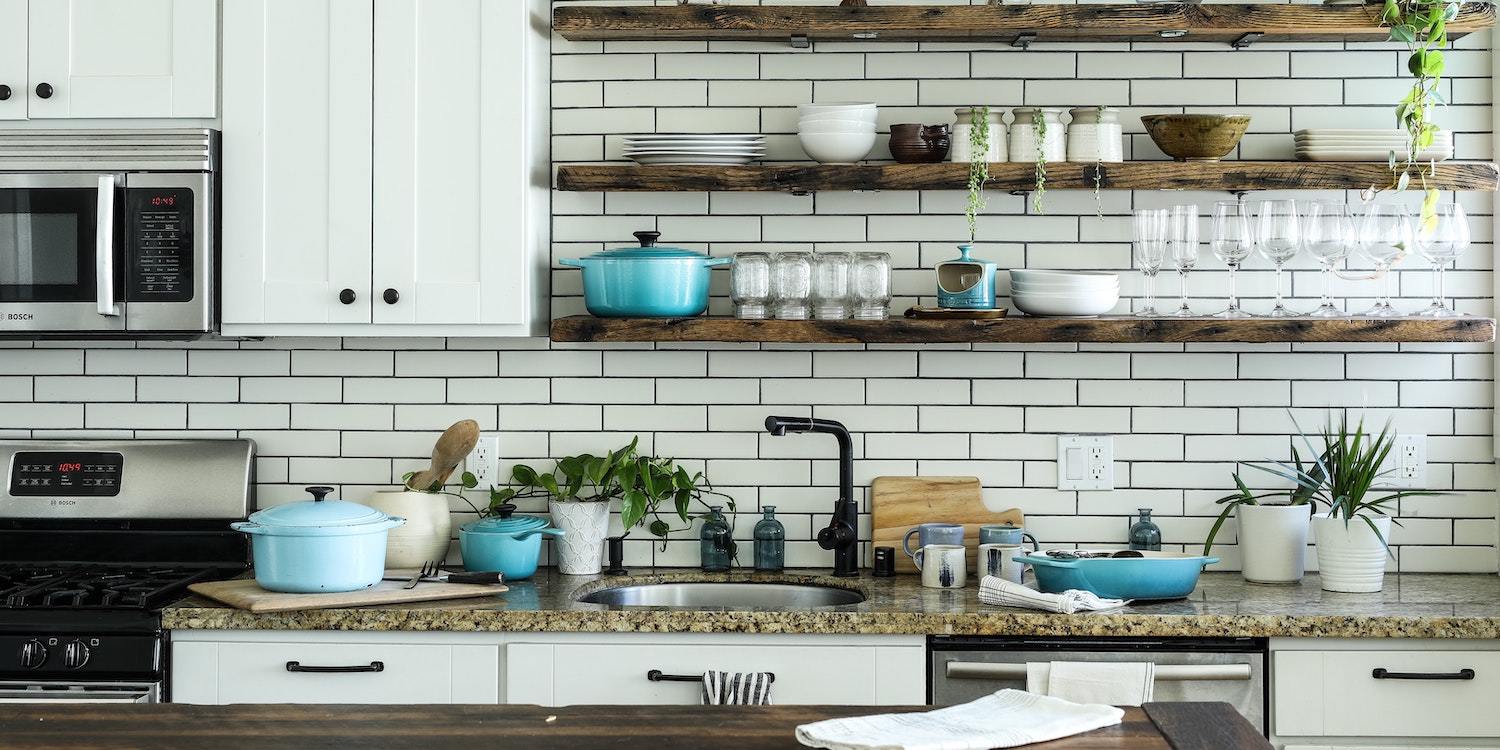Zero-waste kitchens are not only clutter-free and functional, but they support lifestyles that reduce environmental harm. Transforming your kitchen into a zero-waste space may seem daunting, especially if you are the type that wants to change your entire kitchen and routines overnight. While that may be possible for some, for most it is a step-by-step journey that involves longer periods of planning and implementing. Both approaches are effective, and are sure to teach you a great deal about yourself, your habits, and your home!
The Benefits of Zero-Wasting Your Kitchen
It is important to note that even those who practice zero-waste living imperfectly (as many of us do) can still expect to experience the following benefits discussed.
Firstly, zero-waste living requires one to become a more conscious consumer. One can expect to feel overwhelmed at times, as this lifestyle demands you to re-think shopping and disposal habits that you have kept up during your life until now. A mindset shift such as this can carry frustration, stress, and unmet expectations; especially in the beginning, and especially when others around you are carrying on with the status quo. Keep in mind that this is normal, and it gets easier!
It is also important to understand that the benefits of zero-waste living greatly outweigh the challenges and adjustment period.
Specific to the kitchen, zero-waste living promotes a decluttered dining and cooking space, helps you save money, reduces your daily, weekly, and annual waste, and is the one area of the home that, arguably, harms or preserves the environment the most! Thus, the kitchen is a star in the zero-waste community.
Steps and Tips

First off, very few people are 100 percent zero-waste, 24/7, 365. We all produce waste just by living. It is how we produce waste, and what we do with it afterward that determines our environmental impact and just how zero-waste we are.
The kitchen is, by far, the area of the home with the most opportunities to make zero-waste habits. For the same reason, it also becomes an area of the home where many aspiring zero-waters find themselves overwhelmed; unsure of where to start, what products they need, and how to make long-lasting change. The great thing about starting at the kitchen is you will immediately see a difference in the waste you create if you start today.
Research estimates that between 30 and 50 percent of the total amount of food thrown away originates in our own kitchens. This makes food waste a great place to start on your zero-waste journey. To begin, perform a food audit, as food is the most wasted thing to exit your kitchen. A food audit is a system of tracking how much food you currently buy, versus how much food you waste. The cost of your groceries should also be noted, as well as how much plastic packaging you are throwing away.
Research estimates that between 30 and 50 percent of the total amount of food thrown away originates in our own kitchens.
For the next week or two, keep track of your grocery expenses, how many bags of trash your household makes in a week, and what food items you throw away the most. For many of us, this is fruits and vegetables. If you are consistently finding yourself throwing out spoiled food and mounds of leftovers, you are buying in excess for your household size. In fact, it is much better to run out of a certain food, than to throw away what was never used. Not only is this a win for your wallet, as you begin to only buy what you need, but it also helps reduce the amount of waste your household sends to landfills, incinerators, or compost; which we will cover later on.
After auditing, with your consumption of plastics and packaging in mind, it is suggested to begin brainstorming techniques to reduce this as much as possible. Plastics take anywhere from 500 to 1000 years to degrade. Even still, they never entirely degrade, but instead, break down into microplastics. Read more about microplastics in our blog - What Are Microplastics? Currently, 79 percent of plastics are sent to landfills, while only 9 percent is recycled, and 12 percent is incinerated.
Currently, 79 percent of plastics are sent to landfills, while only 9 percent is recycled, and 12 percent is incinerated.
Thus, it is important to reduce your consumption of plastic before choosing to reuse or recycle. Keep in mind that you are unlikely to reduce your plastic consumption perfectly on the first try. Plastic is the most wasted material on earth. It is cheap, lightweight, and is the chosen packaging for most companies today. Reducing your plastic waste grows easier over time through trial and error, as well as through increased pressures on companies to choose more sustainable packaging methods.

In the kitchen, plastics are most commonly found wrapped around food items; packaging. This makes cutting plastic waste tedious, depending on your accessibility to plastic-free options. However, there are methods that will lighten your plastic load.
First, when grocery shopping, avoid using the single-use plastic produce bags provided. Second, when available, buy in bulk, and bring your own containers to carry your bulk goods out, like tupperware or jars. Bulk goods include nuts, seeds, rice, and other grains. Lastly, while grocery shopping, do your best to purchase your favorite grocery items in cardboard boxes, glass jars, and recyclable cans. These steps in conjunction will greatly reduce the amount of plastic you bring home and toss out.
The next step is to develop a zero-waste (or, at least, low-waste) approach to disposing of the waste you do create. Food waste that would normally go to landfills can be composted in a zero-waste kitchen and home. This is an advanced step for zero-wasting your kitchen, and it is okay if it takes you some time to implement it!
For those who have access to curbside composting or other municipality-provided composting programs, take immediate advantage of this if you can. You will be provided with a bin to discard your (ideally, very minimal) food scraps and organic matter, which is typically collected each week by your town or city. If these types of programs are unavailable to you, you can still compost, all you need is a little bit of space, and patience while learning a new way of disposing of your waste. Today, it has never been easier to start composting.
Finally, begin swapping out kitchen items and apparatuses that are wasteful, plastic, or single-use items, for reusable, recycled, or biodegradable options. This is where many zero-wasters have the most fun; finding the latest zero-waste tools to make their lifestyle easier, more enjoyable, and effective.

Essential Zero-Waste Kitchen Product Guide for Beginners!
- Reusable Grocery and Produce Bags
- Reusable Non-Plastic Food Storage Containers
- Bees Wrap
- Wooden Utensils
- Bamboo or Coconut Dish Scrubbers
- Mason Jars
- Counter Compost Bin
- Reusable Coffee Filters
- Reusable Non-Plastic To-Go Cups






